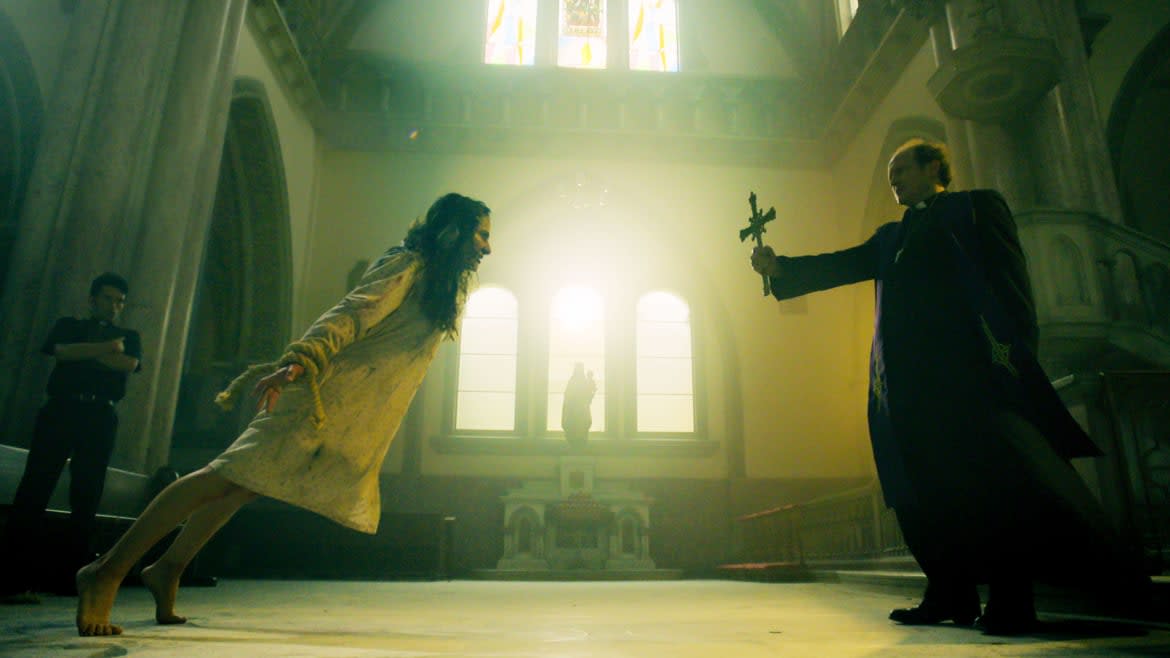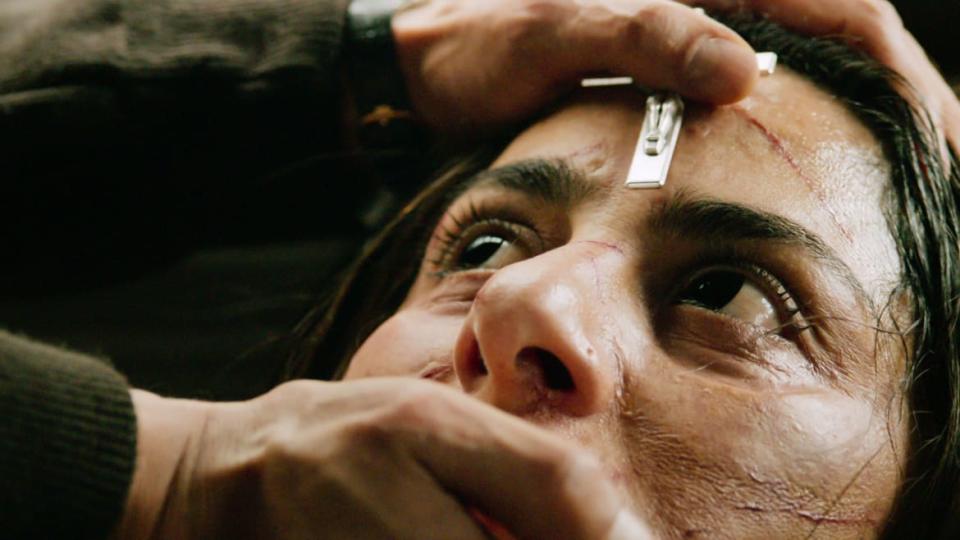Inside Netflix’s Hilariously Absurd ‘Docuseries’ About Demonic Possession

My Encounter with Evil concerns three Mexican tales of demonic possession and exorcism, although viewers may find that its title also doubles as a description of their own experiences with this docuseries, which is overcooked, preposterous, and wall-to-wall ridiculous. Premiering Oct. 28 on Netflix, it’s the least scary thing you can watch for Halloween—if, arguably, the funniest.
Netflix wants to be a one-stop shop for television programming, and My Encounter with Evil is another stab at providing subscribers with a Travel Channel-style show that investigates authentic paranormal insanity. As with those cable efforts, however, it’s about as believable as a three-dollar bill and just as subtle, employing dramatic recreations that are crafted in the manner of a B-movie—full of dark shadows, monstrous visages, and creepy sound effects designed to maximize jump scares—and which are accompanied by interviews with the men and women who came face to face with the unholy. In one of many absurd twists, those staged sequences are ostensibly based on their subjects’ recollections and yet depict wild supernatural incidents that no one actually details, thereby suggesting that producers, for cheap and disingenuous effect, have embellished the “truth” by making it seem more monstrous than it was.
Netflix Just Dropped a Horror Anthology Series That Is to Die For
This is a familiar tactic with such ventures, and it would be more insulting if My Encounter with Evil were plausible from the start. That, alas, is not the case; its narratives are just a nonsensical mishmash of clichés strung together with pronouncements from “experts” who state, in no uncertain terms, that “there is a war between good and evil.” Florencia Macías (along with her former fiancé Pablo and mother Roxana) relays her battle with a demon that terrorized her young daughters and supposedly caused her to have a miscarriage. Sully Urbina and her daughter Jessy discuss the girl’s possession at the hands of a demon known as Asmodeus, and their novel means of coming to grips with that beast. And Andrea Viridiana Rostro Olvera, her sister Esther, and her mother Concepción recount the latter’s possession by none other than Beelzebub himself, who apparently took time out of his busy day running the underworld to habitually toy with a random single mother.
It’s clear from all three stories that these individuals claim demonic possession as a means of feeling special, the irony being that the specifics of their ordeals are brutally hackneyed. There’s no genuine catalyst for any of their run-ins with malevolent forces; instead, histories of abuse, domestic turmoil, and social alienation and bullying at school are posited as the reasons why their spirits were in a weakened state, therefore making them vulnerable to the Devil. Before long, Jessy is thrashing about in her bed in “real footage” shot on a cell phone—which, unsurprisingly, looks a lot less otherworldly than the proceedings’ dramatic recreations—and Florencia and Pablo are video chatting with Antonio Zamudio, the director of the Mexican Agency for Paranormal Investigation, who delivers prayers to combat the demon as the duo place salt around their home. Evidently, you can now combat Satan via Zoom!
There’s no way to take My Encounter with Evil seriously, and it’s even more difficult to excuse its formal clunkiness. Rather than giving each story its own episode, the series jumbles them together, only occasionally bothering with transitional devices (here, spooky title cards dripping in red) to differentiate its tales. The rest of the time, it haphazardly crosscuts between them, lending the material a sloppiness that’s enhanced by its clownish recreations. Bodies levitate off beds, priests scream at demons while thrusting tightly held crucifixes at pale and scarred faces, possessed women vomit up black bile, little girls say and do unnerving things, and female specters with long, stringy hair appear and disappear in front of (and behind) their prey. If you’ve ever seen a horror film, you’ll be well acquainted with such hoary techniques—all of which further underline the phoniness of everything being presented.
Perhaps the most laughable element of My Encounter with Evil is that it gives space to both sides of the possession debate via juxtaposed testimony from exorcism-performing men of the cloth and professional psychiatrists. Yet because the series can’t truly challenge the idea that these women were persecuted by Satan (lest it undermine itself), the doctors articulate nothing but vague, meaningless sentiments. Meanwhile, their pious counterparts—in particular, Archbishop Andrés Tirado—declare that demons are real, that the only way to fight them is through religious means, and that there are all sorts of rules and regulations governing these spiteful creatures’ behavior. Tirado repeatedly itemizes facets of demonic conduct and successful anti-demonic tactics in an effort to make exorcisms sound like a rational, methodical practice. Resembling a man fit for a direct-to-streaming rip-off of The Exorcist, he is not convincing.

My Encounter with Evil is chockablock with ominous messages from the great beyond, mysteriously moving chairs and doors, and an endless barrage of screaming and freaking out. The show’s interviewees revisit their suffering in grave tones and through intermittent tears, but they’re a decidedly wooden bunch and their accounts are unoriginal. There’s no logic to their reports, nor to the way in which they’re presented by the show—for example, since Andrea and Esther appear on-screen, why does their mother Concepción (the protagonist of their entire story) choose to shroud herself in darkness to conceal her identity? It’s inanity on a supremely high level, and it ends on a hilariously diverse note, with Concepción escaping her hellish tormentor by staying true to God, Florencia banishing her home’s malicious resident courtesy of a Wiccan ritual, and Jessy choosing to deal with her affliction by becoming a theistic Satanist and signing a contract with Asmodeus that allows them to be permanent bosom buddies.
Also depicting Hell as two old men sitting on opposite sides of a doorway that opens onto a room with a burning fireplace, My Encounter with Evil never stops peddling horror movie-style madness in a vain attempt to unnerve. Any chance of that happening, however, dies early on, when Sully states, “The day I made contact and could just feel the energy of a demon, I shit myself.”
Get the Daily Beast's biggest scoops and scandals delivered right to your inbox. Sign up now.
Stay informed and gain unlimited access to the Daily Beast's unmatched reporting. Subscribe now.

